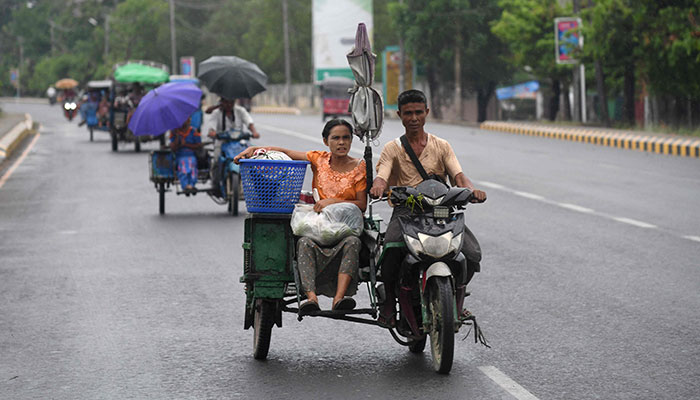Large-scale evacuations in Bangladesh as deadly cyclone approaches
The region braces for what could be the most powerful storm in two decades
May 12, 2023

Half a million people are being urgently evacuated from southeastern Bangladesh, including the world's largest refugee camp in Cox's Bazar, as an extremely dangerous cyclone named Mocha approaches.
With winds expected to reach 170 kph (106 mph) and storm surges up to 3.6m (12ft), concerns grow over the potential devastation and loss of life. The region braces for what could be the most powerful storm in two decades, while authorities scramble to relocate vulnerable populations and prepare for the imminent impact.
Rainfall has already begun in the camp, triggering red warning flags to be raised. Cyclone Mocha is anticipated to be the most potent storm to hit Bangladesh in almost 20 years. As the weather system approaches the Bangladesh-Myanmar coastline, nearby airports have been closed, fishermen instructed to suspend operations, and 1,500 shelters established to relocate vulnerable populations to safety.
Vibhushan Kanti Das, the additional deputy commissioner at Cox's Bazar, affirmed their readiness to confront any hazards, emphasizing the objective of preserving every life. Throughout the day, families have been converging upon designated cyclone shelters, with hundreds seeking refuge in classrooms at a local school in Cox's Bazar. Some have brought their meagre possessions in plastic bags, while others have arrived with their livestock.
Jannat, a 17-year-old mother, expressed her apprehension as she sought shelter, having experienced the destruction caused by Cyclone Sitrang the previous year. The Rohingya refugees, nearly a million in number, who fled from Myanmar and now inhabit flimsy bamboo shelters with tarpaulin covers, remain at significant risk. The United Nations is endeavouring to protect these vulnerable areas.
The Bangladesh government restricts refugees from leaving the camps, leaving many uncertain and fearful about the potential consequences if their shelters are hit by the storm. Mohammad Rafique, residing in a small bamboo shelter constructed for refugees, acknowledges the limited protection it offers against strong winds and heavy rains. Praying for their safety, he expresses hope that their homes will be spared this time.
Meteorologists anticipate the cyclone to bring torrential rainfall, posing a severe landslide threat to those residing in hillside camps, where landslips are a recurrent occurrence. The Bangladeshi government and NGOs are working to ensure the centres are as prepared as possible for the cyclone. However, relocating a million refugees presents considerable challenges.
As the impact of climate change on storm frequency remains unclear, it is known that rising sea surface temperatures fuel the intensity of hurricanes, cyclones, and typhoons by providing more energy. This, in turn, leads to heightened rainfall and more extreme weather events. With global temperatures already 1.1C higher than pre-industrial levels, urgent emission reduction measures are imperative to mitigate further warming.









